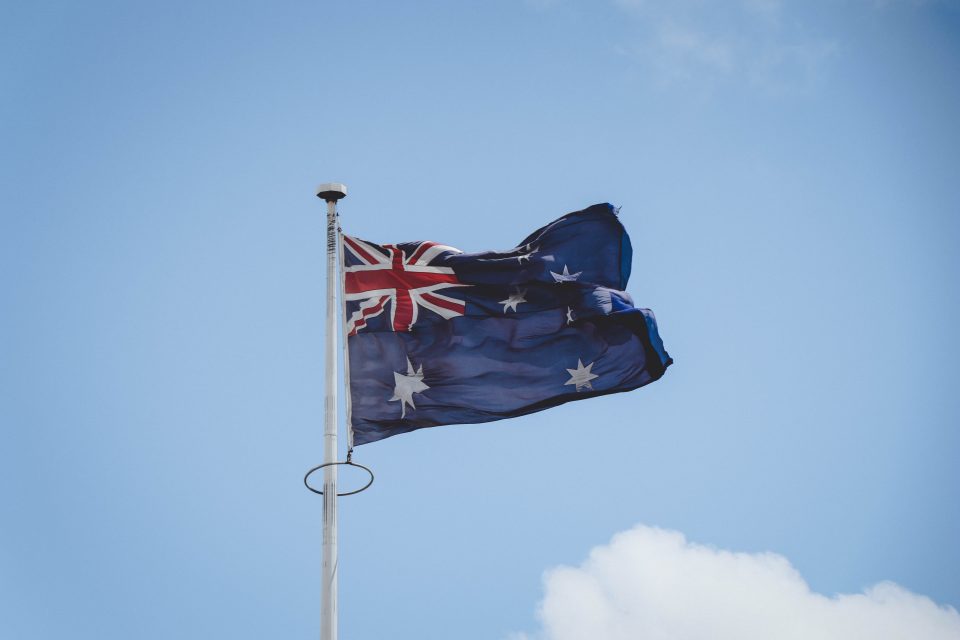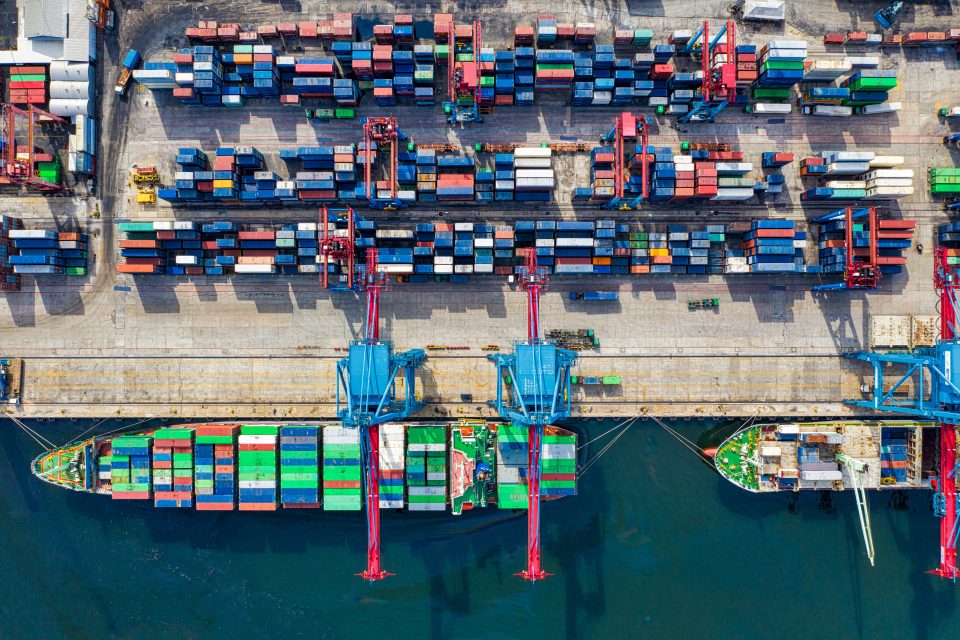AUSTRALIA
GEOGRAPHY
Australia is a continent and an island located in Oceania between the Indian Ocean and the South Pacific Ocean. It shares its name with the country that claims control over it. Properly called the Commonwealth of Australia, its territory consists of the entire continent and smaller outlying islands. This makes it the sixth largest country in the world by area of jurisdiction, which comprises 7,686,850 square kilometres (including Lord Howe Island and Macquarie Island), which is slightly smaller than the 48 states of the contiguous United States and 31.5 times larger than that of the United Kingdom. The Australian mainland has a total coastline length of 35,877 km with an additional 23,859 km of island coastlines. There are 758 estuaries around the country with most located in the tropical and sub-tropical zones. Australia has the 3rd largest exclusive economic zone of 8,148,250 km2. This EEZ does not include the Australian Antarctic Territory. Australia has the largest area of ocean jurisdiction of any country on Earth. It has no land borders. The northernmost points of the continental mainland are the Cape York Peninsula of Queensland and the Top End of the Northern Territory, but the northernmost point of the country lies in the Torres Strait Islands. The western half of Australia consists of the Western Plateau, which rises to mountain heights near the west coast and falls to lower elevations near the continental centre. The Western Plateau region is generally flat, though broken by various mountain ranges such as the Hamersley Range, the MacDonnell Ranges, and the Musgrave Range. Surface water is generally lacking in the Western Plateau, although there are several larger rivers in the west and north, such as the Murchison, Ashburton, and Victoria rivers. The Eastern Highlands, or Great Dividing Range, lie near the eastern coast of Australia, separating the relatively narrow eastern coastal plain from the rest of the continent. These Eastern Australian temperate forests have the greatest relief, the most rainfall, the most abundant and varied flora and fauna, and the densest human settlement. Between the Eastern Highlands and the Western Plateau lie the Central Lowlands, which are made up of the Great Artesian Basin and Australia’s largest river systems, the Murray-Darling Basin and the Lake Eyre Basin. Off the eastern coast of Australia is the world’s largest coral reef complex, the Great Barrier Reef. The large and mountainous island of Tasmania, also a State of Australia, lies south of the south-eastern corner of the Australian mainland. It receives abundant rainfall and has highly fertile soils particularly in comparison to the mainland. Australia consists of six states, two major mainland territories, and other minor territories. The states are New South Wales, Queensland, South Australia, Tasmania, Victoria, and Western Australia. The two major mainland territories are the Northern Territory and the Australian Capital Territory. Western Australia is the largest state covering just under one third of the Australian landmass, followed by Queensland, South Australia, and New South Wales.
Australia also has several minor territories; the federal government administers a separate area within New South Wales, the Jervis Bay Territory, as a naval base and seaport for the national capital.
In addition Australia has the following inhabited, external territories: Norfolk Island, Christmas Island, Cocos (Keeling) Islands, and several largely uninhabited external territories: Ashmore and Cartier Islands, Coral Sea Islands, and Heard Island and McDonald Islands. Australia also claims a portion of Antarctica as the Australian Antarctic Territory, although this claim is not widely recognized.

HISTORY
Fifty million years ago the Australian continent broke away from the great southern landmass of Gondwanaland, which comprised South America, Africa, India, Australia and Antarctica. Apart from a period during the last Ice Age when the sea level was 100 metres lower than it is today, Australia existed in isolation. This resulted in the evolution of vegetation and wildlife which is substantially unique. It was thought that the Aboriginal population may have lived in Australia for 50,000 years. However, recent evidence from the Kimberley region of Western Australia suggests much older human habitation. When European explorers arrived, the Aboriginal peoples lived by hunting and gathering and using stone tools. Estimates of the historical size of the population range up to 750,000 people. Aboriginal society, though technologically undeveloped, had complex cultural and religious forms, and some 500 languages, in 31 basic groups. There was a rich oral tradition of songs and stories, and many different styles of rock art. The first known Europeans to land were Dutch. In 1606, William Janszoon landed on the west coast of Cape York Peninsula, and thereafter various landings were made. The Dutch named this land New Holland but showed no interest in further exploration. In April 1770, Captain James Cook in HMS Endeavour with the botanist Sir Joseph Banks landed in Botany Bay (in what is now New South Wales) and claimed the east coast for the English Crown. Having just lost the American colonies, England needed new penal colonies, and the first shipload of Australian settlers were convicts, arriving with Governor Arthur Phillip in 1788. They moved to Port Jackson (now part of Sydney Harbour) on 26 January, now Australia Day. However, even before transportation to New South Wales was abolished in 1840, free settlers were arriving in increasing numbers. Further exploration, often dangerous, revealed that the land known as New Holland and the English colony were one and the same large island.
In 1831, Western Australia became the second colony, followed by South Australia in 1836, Victoria in 1851, Tasmania in 1856, and Queensland in 1859. The Northern Territory was, for some time, part of South Australia and later the responsibility of the federal government, achieving self-government in 1978. The settler population in early years lived mostly in coastal areas, deploying large tracts of land for sheep and cattle. The annexation of land was often accompanied by brutal treatment of the Aboriginal population, who were forced into the interior. Gold was first discovered in Victoria in the 1850s and prompted Australia’s gold rush with a consequent opening of the interior and more displacement of the Aboriginals. Wheat farming developed, and the country rapidly became a leading exporter. With the invention of refrigeration, export trade in mutton and dairy products began. An extensive railway system was built. Between 1860 and 1890, immigrants, and capital, mostly from Britain, contributed to a long economic boom. In 1891, the country had a population of 3 million, and was exporting wool, mutton, dairy products and wheat. The colonies, all of which had Westminster-style representative institutions by 1890, became one nation on 1 January 1901. The Commonwealth of Australia, with a federal structure, was established. By the time of World War I, Australian politics emphasised social policy, industrial development, and protectionism to cushion local industries and maintain full employment. The development of the steel industry after 1915 and advances in mining assisted development, so that by 1939, industry was responsible for 40 per cent of GDP. Sophisticated industries such as car manufacture developed in the 1950s. By the latter 1980s, Australians enjoyed one of the world’s highest living standards. Australia’s political party system traditionally consisted of the Liberal Party, National Party (originally known as the Country Party) and Labour Party (ALP). The Liberal and National parties were frequently in coalition. A new party, the Australian Democrats, was formed in the 1970s as a breakaway group from the Liberal–National coalition. The Liberal–National coalition was in office from 1949 until 1972, and again from 1975 to 1983, under Malcolm Fraser. The Labour Party, under Bob Hawke and then Paul Keating, was in office from 1983 to 1996, when the Liberal–National coalition led by John Howard returned to power. Howard’s conservative coalition’s majority was reduced in an early general election in October 1998, in the face of a strong showing by the Labour Party led by Kim Beazley.
In February 1998, the Constitutional Convention voted by 89 votes to 52 for Australia to become a republic by 2001, and by 73 votes to 57 to replace the British monarch with a President. It was agreed that there would be a referendum on the issue.
Despite evidence from opinion polls that most Australians were in favour of a republic, in the referendum of November 1999 – when asked if they supported ‘an act to alter the constitution to establish the Commonwealth of Australia as a republic, with the Queen and Governor-General being replaced by a President appointed by a two-thirds majority of the members of the Commonwealth Parliament’ – almost 55 per cent registered a ‘No’ vote. The result was widely attributed to widespread dissatisfaction about the right of parliamentarians to choose a President.


SOCIAL CULTURE AND RELIGION
Australia has no state religion; Section 116 of the Australian Constitution prohibits the federal government from making any law to establish any religion, impose any religious observance, or prohibit the free exercise of any religion. In the 2016 census, 52.1% of Australians were counted as Christian, including 22.6% as Roman Catholic and 13.3% as Anglican; 30.1% of the population reported having “no religion”; 8.2% identify with non-Christian religions, the largest of these being Islam (2.6%), followed by Buddhism (2.4%), Hinduism (1.9%), Sikhism (0.5%) and Judaism (0.4%). The remaining 9.7% of the population did not provide an adequate answer. Those who reported having no religion increased conspicuously from 19% in 2006 to 22% in 2011 to 30.1% in 2016. Before European settlement, the animist beliefs of Australia ‘ s indigenous people had been practiced for many thousands of years. Mainland Aboriginal Australians’ spirituality is known as the Dreamtime and it places a heavy emphasis on belonging to the land. The collection of stories that it contains shaped Aboriginal law and customs. Aboriginal art, story and dance continue to draw on these spiritual traditions. The spirituality and customs of Torres Strait Islanders, who inhabit the islands between Australia and New Guinea, reflected their Melanesian origins and dependence on the sea. The 1996 Australian census counted more than 7000 respondents as followers of a traditional Aboriginal religion. Since the arrival of the First Fleet of British ships in 1788, Christianity has become the major religion practiced in Australia. Christian churches have played an integral role in the development of education, health and welfare services in Australia. For much of Australian history, the Church of England (now known as the Anglican Church of Australia) was the largest religious denomination, with a large Roman Catholic minority. However, multicultural immigration has contributed to a steep decline in its relative position since the Second World War. Similarly, Islam, Buddhism, Hinduism, Sikhism and Judaism have all grown in Australia over the past half-century. Australia has one of the lowest levels of religious adherence in the world. multicultural immigration has contributed to a steep decline in its relative position since the Second World War. Similarly, Islam, Buddhism, Hinduism, Sikhism and Judaism have all grown in Australia over the past half-century. Australia has one of the lowest levels of religious adherence in the world. multicultural immigration has contributed to a steep decline in its relative position since the Second World War. Similarly, Islam, Buddhism, Hinduism, Sikhism and Judaism have all grown in Australia over the past half-century. Australia has one of the lowest levels of religious adherence in the world.
Greeting People
When meeting someone for the first time, it is usual to shake the person’s right hand with your right hand. People who do not know each other generally do not kiss or hug when meeting. When you first meet someone, it is polite not to talk about personal matters. Many Australians look at the eyes of the people they are talking with. They consider this a sign of respect, and an indication that they are listening. Do not stare at the person for a long time. You can address a new acquaintance using their title and family name. You may use their first name when they ask you to or use it in the introduction. In the workplace and among friends, most Australians tend to be informal and call each other by their first names.
Clothing Customs
The types of clothing that people wear reflect the diversity in our society just as much as the variation in climate. There are no laws or rules on clothing, but you must wear certain clothing for work situations. Most workplaces have dress standards. Outside of the work situation, clothing is an individual choice; many people dress for comfort, for the social situation or the weather. Clubs, movie theaters and other places require patrons to be in neat, clean clothes and appropriate footwear.
Many Australians live close to the beach and the sea. On hot days, they may wear little clothing on the beach and surrounds. This does not mean that people who dress to go to the beach or swimming have low moral standards. It means that this is what we accept on and near our beaches. People from other countries can choose to wear their national dress. They may be religious or customary items and include monks’ robe, a burqa, a hijab or a turban. As a tolerant society with people from many different cultures, clothing is a part of cultural beliefs and practices that is encouraged.
Polite Behavior
‘Please’ and ‘thank you’ are words that are very helpful when dealing with other people, and buying goods or services. When asked if you would like something, like a cup of tea, it is polite to say, ‘Yes please’, or just ‘please’ if you would like it, or ‘no, thank you’ if you do not. When you receive something, it is polite to thank the person by saying ‘thank you’. Australians tend to think that people who do not say ‘please’ or ‘thank you’ are being rude. Using these words will help in building a good relationship. Sometimes a sensitive issue may come up in conversation. Not to talk may seem rude. It is more polite to say ‘sorry, it is too hard to explain’ than to ignore a question. Australians often say, ‘Excuse me’ to get a person’s attention and ‘sorry’ if we bump into them.
You should always try to be on time for meetings and other visits. If you realize you are going to be late, try to contact the person to let them know. This is very important for visits to professionals as you may be charged money for being late or if you miss the appointment without notifying them before the appointment time.

POLITICS
Australia is a federal parliamentary constitutional monarchy. The country has maintained a stable liberal democratic political system under its constitution, which is one of the world’s oldest, since Federation in 1901. It is also one of the world’s oldest federations, in which power is divided between the federal and state and territorial governments. The Australian system of government combines elements derived from the political systems of the United Kingdom (a fused executive, constitutional monarchy and strong party discipline) and the United States (federalism, a written constitution and strong bicameralism with an elected upper house), along with distinctive indigenous features. The federal government is separated into three branches:
- Legislature: the bicameral Parliament, comprising the monarch (represented by the governor-general), the Senate, and the House of Representatives;
- Executive: The Federal Executive Council, which in practice gives legal effect to the decisions of the cabinet, comprising the prime minister and other ministers of state appointed by the governor-general on the advice of Parliament;
- Judiciary: The High Court of Australia and other federal courts, whose judges are appointed by the governor-general on advice of Parliament.
Elizabeth II reigns as Queen of Australia and is represented in Australia by the governor-general at the federal level and by the governors at the state level, who by convention act on the advice of her ministers.
Thus, in practice the governor-general acts as a legal figurehead for the actions of the prime minister and the Federal Executive Council. The governor-general does have extraordinary reserve powers which may be exercised outside the prime minister’s request in rare and limited circumstances, the most notable exercise of which was the dismissal of the Whitlam Government in the constitutional crisis of 1975. In the Senate (the upper house), there are 76 senators: twelve each from the states and two each from the mainland territories (the Australian Capital Territory and the Northern Territory). The House of Representatives (the lower house) has 151 members elected from single-member electoral divisions, commonly known as “electorates” or “seats”, allocated to states on the basis of population, with each original state guaranteed a minimum of five seats. Elections for both chambers are normally held every three years simultaneously; senators have overlapping six-year terms except for those from the territories, whose terms are not fixed but are tied to the electoral cycle for the lower house; thus only 40 of the 76 places in the Senate are put to each election unless the cycle is interrupted by a double dissolution. Australia’s electoral system uses preferential voting for all lower house elections except for Tasmania and the ACT which, along with the Senate and most state upper houses, combine it with proportional representation in a system known as the single transferable vote. Voting is compulsory for all enrolled citizens 18 years and over in every jurisdiction, as is enrolment (except for South Australia). The party with majority support in the House of Representatives forms the government and its leader becomes Prime Minister. In cases where no party has majority support, the Governor-General has the constitutional power to appoint the Prime Minister and, if necessary, dismiss one that has lost the confidence of Parliament. There are two major political groups that usually form government, federally and in the states: the Australian Labour Party and the Coalition which is a formal grouping of the Liberal Party and its minor partner, the National Party. Within Australian political culture, the Coalition is considered centre-right and the Labour Party is considered centre-left. Independent members and several minor parties have achieved representation in Australian parliaments, mostly in upper houses. The most recent federal election was held on 18 May 2019 and resulted in the Coalition, led by Prime Minister Scott Morrison, retaining government.

ECONOMY
A wealthy country, Australia has a market economy, a high GDP per capita, and a relatively low rate of poverty. In terms of average wealth, Australia ranked second in the world after Switzerland from 2013 until 2018. In 2018, Australia overtook Switzerland and became the country with the highest average wealth. Australia’s poverty rate increased from 10.2% to 11.8%, from 2000/01 to 2013. It was identified by the Credit Suisse Research Institute as the nation with the highest median wealth in the world and the second-highest average wealth per adult in 2013. The Australian dollar is the currency for the nation, including Christmas Island, Cocos (Keeling) Islands, and Norfolk Island, as well as the independent Pacific Island states of Kiribati, Nauru, and Tuvalu. With the 2006 merger of the Australian Stock Exchange and the Sydney Futures Exchange, the Australian Securities Exchange became the ninth largest in the world. Ranked fifth in the Index of Economic Freedom (2017), Australia is the world’s 14th largest economy and has the tenth highest per capita GDP (nominal) at US$55,692. The country was ranked third in the United Nations 2017 Human Development Index. Melbourne reached top spot for the fourth year in a row on The Economist’s 2014 list of the world’s most liveable cities, followed by Adelaide, Sydney, and Perth in the fifth, seventh, and ninth places respectively. Total government debt in Australia is about A$190 billion— 20% of GDP in 2010. Australia has among the highest house prices and some of the highest household debt levels in the world. An emphasis on exporting commodities rather than manufactured goods has underpinned a significant increase in Australia’s terms of trade since the start of the 21st century, due to rising commodity prices. Australia has a balance of payments that is more than 7% of GDP negative, and has had persistently large current account deficits for more than 50 years. Australia has grown at an average annual rate of 3.6% for over 15 years, in comparison to the OECD annual average of 2.5%. Australia was the only advanced economy not to experience a recession due to the global financial downturn in 2008–2009. However, the economies of six of Australia’s major trading partners have been in recession, which in turn has affected Australia, significantly hampering its economic growth in recent years. From 2012 to early 2013, Australia’s national economy grew, but some non-mining states and Australia’s non-mining economy experienced a recession. The Hawke Government floated the Australian dollar in 1983 and partially deregulated the financial system. The Howard Government followed with a partial deregulation of the labour market and the further privatisation of state-owned businesses, most notably in the telecommunications industry. The indirect tax system was substantially changed in July 2000 with the introduction of a 10% Goods and Services Tax (GST). In Australia’s tax system, personal and company income tax are the main sources of government revenue. As of September 2018, there were 12,640,800 people employed (either full- or part-time), with an unemployment rate of 5.2%. Data released in mid-November 2013 showed that the number of welfare recipients had grown by 55%. In 2007 228,621 Newstart unemployment allowance recipients were registered, a total that increased to 646,414 in March 2013. According to the Graduate Careers Survey, full-time employment for newly qualified professionals from various occupations has declined since 2011 but it increases for graduates three years after graduation. Since 2008, inflation has typically been 2–3% and the base interest rate 5–6%. The service sector of the economy, including tourism, education, and financial services, accounts for about 70% of GDP. Rich in natural resources, Australia is a major exporter of agricultural products, particularly wheat and wool, minerals such as iron-ore and gold, and energy in the forms of liquified natural gas and coal. Although agriculture and natural resources account for only 3% and 5% of GDP respectively, they contribute substantially to export performance. Australia’s largest export markets are Japan, China, the United States, South Korea, and New Zealand. Australia is the world’s fourth largest exporter of wine, and the wine industry contributes A$5.5 billion per year to the nation’s economy.

IMPORT/EXPORT
In 2018, Australia was the number 13 economy in the world in terms of GDP (current US$), the number 24 in total exports, the number 24 in total imports, the number 12 economy in terms of GDP per capita (current US$) and the number 73 most complex economy according to the Economic Complexity Index (ECI)
In 2018, Australia exported a total of $248B, making it the number 24 exporter in the world. During the last five reported years the exports of Australia have changed by -$15.1B from $263B in 2013 to $248B in 2018.
The most recent exports are led by Coal Briquettes ($57.2B), Iron Ore ($48.1B), Petroleum Gas ($17.6B), Gold ($16.1B), and Aluminium Oxide ($6.66B). The most common destination for the exports of Australia are China ($87.9B), Japan ($27.6B), South Korea ($19.2B), India ($18.9B), and United States ($9.71B).
In 2018 Australia imported $219B, making it the number 24 trade destination in the world. During the last five reported years the imports of Australia changed by -$5.5B from $224B in 2013 to $219B in 2018.
The most recent imports of Australia are led by Refined Petroleum ($18.5B), Cars ($18.1B), Crude Petroleum ($9.25B), Delivery Trucks ($7.29B), and Broadcasting Equipment ($6.51B). The most common import partners for Australia are China ($52.7B), United States ($22.2B), Japan ($16.6B), Germany ($11.9B), and Thailand ($11.1B)

INTERNATIONAL RELATIONS
Over recent decades, Australia’s foreign relations have been driven by a close association with the United States through the ANZUS pact, and by a desire to develop relationships with Asia and the Pacific, particularly through ASEAN, the Pacific Islands Forum and the Pacific Community, of which Australia is a founding member.
In 2005 Australia secured an inaugural seat at the East Asia Summit following its accession to the Treaty of Amity and Cooperation in Southeast Asia, and in 2011 attended the Sixth East Asia Summit in Indonesia.
Australia is a member of the Commonwealth of Nations, in which the Commonwealth Heads of Government meetings provide the main forum for co-operation. Australia has pursued the cause of international trade liberalisation. It led the formation of the Cairns Group and Asia-Pacific Economic Cooperation.
Australia is a member of the Organisation for Economic Co-operation and Development and the World Trade Organization, and has pursued several major bilateral free trade agreements, most recently the Australia–United States Free Trade Agreement and Closer Economic Relations with New Zealand, with another free trade agreement being negotiated with China — the Australia–China Free Trade Agreement — and Japan, South Korea in 2011, Australia–Chile Free Trade Agreement, and as of November 2015 has put the Trans-Pacific Partnership before parliament for ratification. Australia maintains a deeply integrated relationship with neighbouring New Zealand, with free mobility of citizens between the two countries under the Trans-Tasman Travel Arrangement and free trade under the Australia–New Zealand Closer Economic Relations Trade Agreement. New Zealand, Canada and the United Kingdom are the most favourably viewed countries in the world by Australian people, sharing several close diplomatic, military and cultural ties with Australia. Along with New Zealand, the United Kingdom, Malaysia and Singapore, Australia is party to the Five Power Defence Arrangements, a regional defence agreement. A founding member country of the United Nations, Australia is strongly committed to multilateralism and maintains an international aid program under which some 60 countries receive assistance. Australia has diplomatic representatives in over 90 locations. Australia has official relations with several countries. In several countries, Australia maintains an embassy, or in the case of Commonwealth countries, a high commission.
Australia has consulates in many countries where there are no official government ties in existence, and these serve primarily to assist Australian travellers and businesspeople visiting those countries. A few Canadian missions provide consular assistance to Australians in countries in Africa where Australia does not maintain an office (and Australia reciprocates this arrangement for Canadain some other countries) through the Canada-Australia Consular Services Sharing Agreement. Due to the One China Policy of the People’s Republic of China, the Australian Office in Taiwan (formerly the Australian Commerce and Industry Office) unofficially represents Australia’s interest in Taiwan, serving a function like other Australian Consulates.
